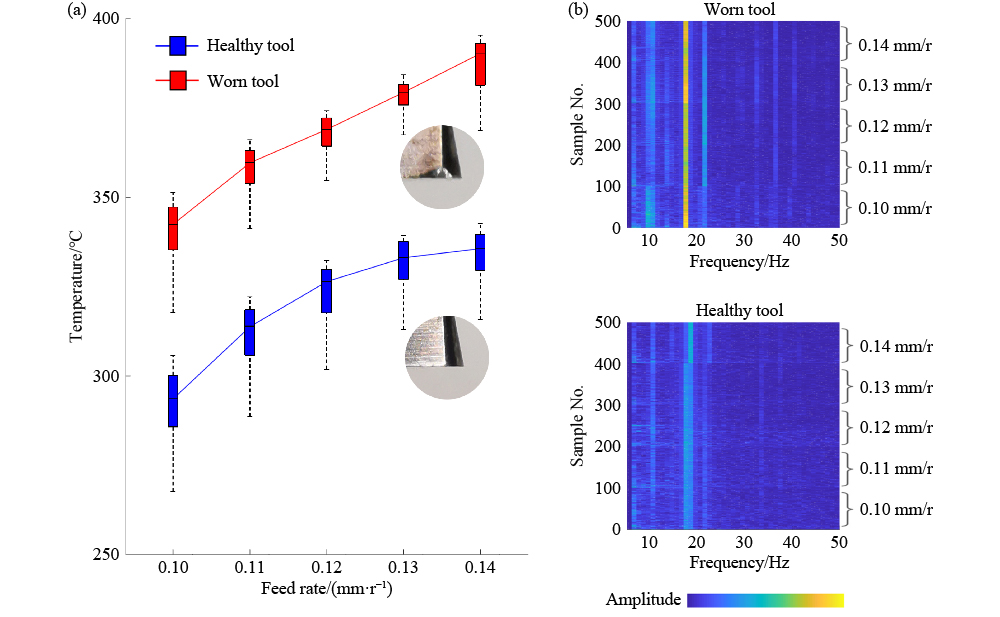Recently, new cutting processes such as hard turning, high speed cutting, and heavy duty cutting have been widely used, forcing cutting tools to undertake many challenges from high cutting temperatures and large cutting forces [
1]. Tool wear and failure constitute about 20% of the total downtime, making cutting process monitoring quite substantial [
2,
3]. Signals such as cutting forces, acoustic emissions (AEs), vibrations, and images produced in cutting processes, together with multiple signal processing algorithms such as frequency domain analysis, wavelet transform, and empirical mode decomposition, are widely used. Based on that, machine learning methods such as support vector machine (SVM) and artificial neural network (ANN) are constantly introduced to construct the mappings between signals and tool conditions [
4,
5]. Özel and Nadgir [
6] noticed that tool wear affects the proportion of every force component and used a three-layer fully connected neural network to conduct the wear fitting. Yen et al. [
7] adopted a self-organizing feature map (SOM) to pretreat the AE acquired in micro milling. As a comparison, the SOM performed better than traditional methods when extracting features. Hsieh et al. [
8] and Wang et al. [
9] applied a multilayer perceptron and an SVM, respectively, for vibration distinguishing. Mikołajczyk et al. [
10,
11] used two neural networks. The first one conducted image binarizations for wear length determinations, based on which another network provided tool life predictions. Bergs et al. [
12] adopted a convolutional neural network (CNN) for tool type identification and tool wear estimation.












